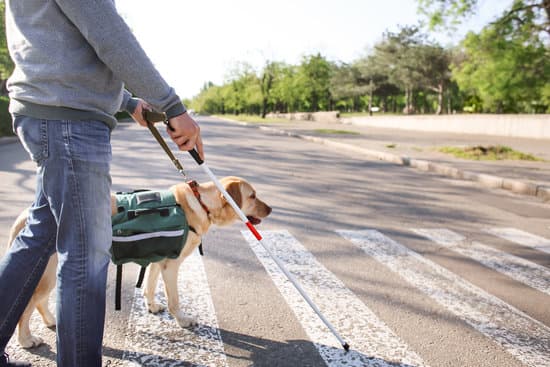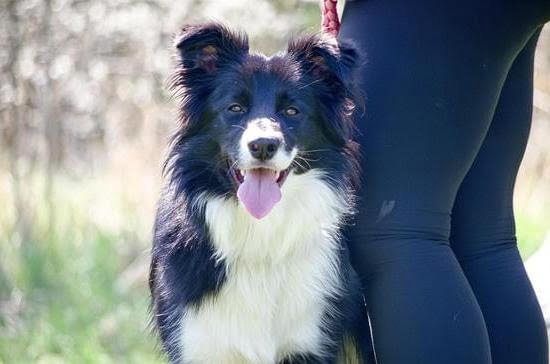Are you an adventurous dog owner looking for a unique way to bond with your furry friend? Training your dog to mountain bike might just be the answer. This growing trend of incorporating dogs into outdoor adventures has numerous benefits, both physical and mental, for both the dog and their owner. However, it’s important to set realistic expectations and understand the necessary steps involved in training your dog to safely accompany you on mountain biking excursions.
In this article, we will explore the many advantages of training your dog to mountain bike, from exploring new trails together to strengthening the bond between you and your four-legged companion. We will also discuss how evaluating your dog’s fitness level and health is crucial before embarking on any outdoor activities. Additionally, building a foundation of basic obedience training is key to ensuring a successful partnership on the trails.
Before diving deep into specific training exercises, we will guide you through introducing your dog to mountain biking gear and equipment. Gradually acclimatizing your dog to wearing and using essential gear such as harnesses and leashes will help them feel comfortable during rides. Furthermore, teaching your dog trail etiquette and safety commands is vital for their well-being when navigating potentially hazardous environments.
Once these foundational aspects are in place, we will delve into conditioning your dog for mountain biking by gradually increasing their endurance and stamina through targeted exercises. Proper warm-up and cool-down routines are paramount for preventing injuries during intense physical activities. Practical training exercises in controlled environments will allow you to prepare your canine companion for the unique challenges they may face while out on the trails.
As progress is made in training, it’s time to venture onto actual mountain bike trails. Starting with simpler routes allows your dog to gain confidence as they experience different terrains and obstacles commonly found in these environments. We’ll provide strategies for dealing with distractions and approaching other bikers or animals along the trail.
Of course, safety and comfort are paramount during any mountain biking trip. We will discuss appropriate food, hydration, and pacing considerations to prevent overheating or exhaustion for your dog. Lastly, we’ll explore essential safety gear and precautions to ensure your furry sidekick remains protected throughout your adventures together.
So if you’re ready to embark on an exciting journey with your canine companion, join us as we guide you through the process of training your dog to mountain bike. Discover the joy and thrill that await you both on the trails while embracing responsible and considerate practices along the way.
Assessing Your Dog’s Fitness Level and Health
When training your dog to mountain bike, it is crucial to assess their fitness level and overall health. Just like humans, dogs need to be in good physical condition before embarking on any strenuous activity. In this section, we will discuss some tips on evaluating your dog’s fitness level and health, the importance of regular vet check-ups and vaccinations, as well as recognizing any breed-specific limitations or concerns.
Evaluating Your Dog’s Fitness Level
Before starting any training program, it is essential to evaluate your dog’s fitness level. Factors such as age, size, and breed can affect a dog’s ability to handle physical activities like mountain biking. Take into consideration their energy levels, endurance, and any previous medical conditions or injuries they may have had. It is recommended to consult with your veterinarian if you have any concerns about your dog’s fitness level.
Here are a few exercises you can do at home to assess your dog’s overall fitness:
- Walk/Run Test: Take your dog for a brisk walk or jog and observe how they handle the exercise. Look for signs of fatigue or difficulty breathing.
- Balance Test: Have your dog stand on an unstable surface, such as a cushion or thick yoga mat. See how long they can maintain their balance without wobbling or falling.
- Jumping Test: Set up a low obstacle (such as a small hurdle) and encourage your dog to jump over it. Observe their jumping technique and if they land safely.
The Importance of Vet Check-Ups and Vaccinations
Regular vet check-ups are crucial for maintaining your dog’s health and ensuring they are fit for outdoor activities like mountain biking. During these visits, the vet can perform necessary tests to assess your dog’s overall well-being and identify any underlying issues that may affect their ability to participate in physical activities.
Additionally, make sure that all vaccinations are up to date. This is particularly important when exposing your dog to new environments and potentially interacting with other animals. Vaccinations can protect your dog from contagious diseases commonly found in outdoor settings.
Recognizing Breed-Specific Limitations or Concerns
Different breeds have different physical characteristics and predispositions that may affect their ability to partake in certain activities. For example, short-nosed breeds like Bulldogs or Pugs may struggle with breathing issues and overheating, while large or giant breeds may be prone to joint problems.
Research your dog’s breed and consult with your veterinarian about any potential limitations or concerns they may have when it comes to physical activities like mountain biking. Understanding these limitations will help you tailor your training program to suit your dog’s specific needs and prevent any unnecessary strain or injuries.
By assessing your dog’s fitness level, regularly scheduling vet check-ups, and being aware of any breed-specific limitations or concerns, you can ensure that your furry companion is ready for the challenges of mountain biking training. This thoughtful approach will help keep them safe, healthy, and able to fully enjoy their outdoor adventures with you.
Building a Foundation of Basic Obedience Training
To ensure a successful and enjoyable mountain biking experience with your dog, it is crucial to establish a strong foundation of basic obedience training. This section will discuss the necessity of obedience training and highlight key commands that are essential for your furry companion’s safety and well-being on the trails.
Basic obedience training provides the groundwork for effective communication between you and your dog, which is vital in any outdoor activity. Commands such as sit, stay, come, and leave it are especially important when mountain biking with your dog. By mastering these commands, you can easily control your dog’s behavior during the ride and avoid potentially dangerous situations.
When teaching obedience skills to your dog, consistency is key. Use positive reinforcement techniques like treats or verbal praise to reward your furry friend for following commands correctly. It is important to be patient and persistent while training, as every dog learns at their own pace.
A few helpful tools for obedience training include a clicker, which can help reinforce positive behaviors through sound association, and a long leash or training lead that allows you to maintain control over your dog while giving them some freedom to explore. It may also be beneficial to enroll in obedience classes or seek guidance from a professional trainer who specializes in working with dogs in outdoor settings.
Ensuring that your dog has a solid foundation of basic obedience training will not only make mountain biking safer but also contribute to an overall positive experience for both you and your four-legged companion. With proper training and consistent reinforcement of obedience skills, you can confidently hit the trails together knowing that your furry sidekick will listen and respond appropriately to commands.
| Commands | Purpose |
|---|---|
| Sit | A command used to instruct the dog to sit down on command. |
| Stay | A command used to instruct the dog to remain in a specific position until given further instruction. |
| Come | A command used to recall or call the dog back to you when off-leash. |
| Leave It | A command used to prevent your dog from picking up or engaging with something potentially dangerous or unwanted. |
Introducing Your Dog to Mountain Biking Gear and Equipment
When training your dog to mountain bike, it is crucial to introduce them to the necessary gear and equipment gradually. This section will discuss the essential gear needed for a successful outing and provide tips on acclimatizing your dog to using this gear effectively.
One of the most important pieces of equipment for mountain biking with your dog is a dog-specific harness. This harness should have sturdy attachment points that allow you to secure your dog safely without restricting their movement. To get your dog used to wearing the harness, start by letting them sniff it and reward them with treats for positive associations.
Gradually progress by having them wear the harness indoors for short periods before moving on to outdoor sessions. It is also crucial to ensure a proper fit for comfort during rides.
In addition to the harness, a suitable leash is essential for maintaining control over your dog on the trail. Opt for a hands-free leash that attaches securely to your waist or bike frame, allowing you to steer and maintain balance while keeping both hands on the handlebars.
Introduce your dog to this setup by allowing them to walk comfortably on a loose leash at first, rewarding good behavior along the way. As they become accustomed, gradually increase their proximity and speed while monitoring their response.
Mountain Biking Gear Checklist
| Gear | Description |
|---|---|
| Dog-Specific Harness | A well-fitting harness with secure attachment points. |
| Hands-Free Leash | A leash that allows you to keep both hands free. |
| Muzzle (if needed) | A muzzle for dogs with a tendency to bite or show aggression towards others. |
| Helmet (for your dog) | A specially designed helmet that provides head protection for your dog during rides. |
Once your dog is comfortable with the harness and leash, consider introducing them to additional gear such as a muzzle if necessary. Some dogs may exhibit aggressive behavior towards other animals or show signs of fear and anxiety on the trail. In these cases, using a muzzle can help ensure everyone’s safety. Introduce the muzzle gradually by allowing your dog to sniff it and offering treats as positive reinforcement.
It is also important to prioritize your dog’s safety by considering a helmet designed specifically for dogs, especially if you plan on riding on more challenging trails. These helmets provide head protection in case of falls or collisions. Gradually introduce the helmet by letting your dog sniff it, rewarding calm behavior, and slowly getting them accustomed to having it placed on their head.
By gradually introducing your dog to mountain biking gear and equipment, you will help them become comfortable and confident before hitting the trails. Remember to always prioritize their safety and well-being throughout the training process, ensuring that all gear fits properly and allows for freedom of movement.
Teaching Your Dog Trail Etiquette and Safety
Teaching your dog to stay on the designated trail and avoid potentially dangerous areas
When training your dog to mountain bike, it is crucial to teach them proper trail etiquette and safety. One of the first skills you should focus on is teaching your dog to stay on the designated trail. This not only ensures their safety but also respects the environment and other trail users.
To teach your dog trail etiquette, start by walking them on a leash along the trail. Use a verbal cue, such as “stay” or “on the trail,” every time they start to stray off path. Reward them with treats and praise when they follow the command correctly.
Gradually increase the difficulty by allowing them off-leash but keeping a close eye on their behavior. If they begin to venture off, promptly call them back using a recall command like “come.” With consistent practice and reinforcement, your dog will learn to stay on the designated trail.
Introducing your dog to common trail obstacles, like rocks, roots, and drops
Mountain biking trails often present various obstacles such as rocks, roots, drops, and fallen branches. It is essential to familiarize your dog with these obstacles during training sessions before hitting the trails.
Start by creating a controlled environment mimicking different trail conditions in your backyard or at a local park. Use items like rocks or small logs as obstacles for your dog to navigate around or jump over. Encourage them with positive reinforcement each time they successfully overcome an obstacle.
As your dog becomes more comfortable with basic obstacles, gradually increase the difficulty level by introducing taller rocks or larger jumps. Remember always to prioritize safety and never force your dog into situations they are uncomfortable with. By exposing them progressively to various trail obstacles during training sessions, you’ll prepare them for challenges they may encounter while mountain biking.
Training commands to help your dog safely navigate the trail and respond to potential dangers
Teaching your dog specific commands can greatly contribute to their safety while mountain biking. Two crucial commands for trail navigation are “leave it” and “watch out”.
The “leave it” command is useful for situations where your dog may encounter dangerous or harmful objects on the trail, such as toxic plants or discarded food. Begin by showing your dog a treat in your hand and closing your fist around it. Say “leave it” firmly but calmly.
If they try to sniff, paw, or lick your hand, close it tighter and wait until they stop. Once they do, give them a different treat from your other hand as a reward. Repeat this exercise multiple times until they reliably respond to the “leave it” command.
The “watch out” command is essential for alerting your dog to potential hazards on the trail, such as approaching bikers or animals. Start by having a friend ride past you at a safe distance while saying “watch out.” Simultaneously, gently guide your dog’s attention towards the biker by turning their head with treats if necessary.
Reward them when they make eye contact with the biker and continue doing so as the rider passes by. Consistent practice will help your dog associate the command with being attentive to their surroundings during mountain biking trips.
Remember that training takes time and patience. Practice these commands consistently and reinforce positive behaviors so that both you and your furry companion can safely navigate the trails together.
Conditioning Your Dog for Mountain Biking
Before embarking on mountain biking adventures with your furry companion, it’s essential to ensure that your dog is physically prepared for the challenges ahead. Conditioning your dog for mountain biking involves gradually increasing their endurance, building strength and agility, and prioritizing their physical well-being. Here are some steps you can take to condition your dog for mountain biking:
- Gradually increase your dog’s endurance and stamina through regular exercise sessions: Start by taking your dog on short walks or runs to build their cardiovascular fitness. Increase the duration and intensity of these exercises gradually over time. You can also incorporate other activities like swimming or playing fetch to engage different muscle groups.
- Build up your dog’s strength and agility with targeted exercises and activities: Incorporate exercises that focus on strengthening your dog’s core muscles, such as sit-ups or balancing exercises on wobble boards or stability balls. Engage them in activities that promote agility, such as running through an obstacle course or jumping over low hurdles.
- Prioritize proper warm-up and cool-down routines for your dog’s physical well-being: Before each exercise session, spend a few minutes warming up your dog’s muscles with gentle stretching exercises or a short walk at a moderate pace. Afterward, allow them to cool down gradually by reducing the intensity of the activity and offering plenty of water.
Remember that conditioning takes time and patience, so be sure to listen to your dog’s cues and adjust their training accordingly. Pay attention to any signs of fatigue or discomfort during exercise sessions, and consult with a veterinarian if you have any concerns about your dog’s fitness level.
To maximize the benefits of conditioning exercises, consider incorporating mental stimulation into your training routine as well. Puzzle toys, interactive games, and obedience training sessions can help keep your dog mentally sharp while preparing them physically for mountain biking adventures.
With proper conditioning, you’ll be setting both you and your dog up for a safe and enjoyable mountain biking experience. As always, consult with a professional trainer or veterinarian for personalized advice tailored to your dog’s specific needs and abilities.
Practical Training Exercises for Mountain Biking
Introduction to Practical Training Exercises
Once you have established a strong foundation of basic obedience training for your dog, it’s time to start incorporating practical training exercises specifically designed for mountain biking. These exercises will help prepare your dog for the unique challenges encountered on the trails and ensure a safe and enjoyable experience for both of you. By practicing these exercises in a controlled environment before hitting the trails, you can gradually build up your dog’s confidence and skills.
Controlled Environment Training
Before venturing out onto the mountain bike trails, it is crucial to practice commands and obedience skills in a controlled environment. You can use an enclosed area, such as a fenced yard or an empty parking lot, to simulate trail conditions and familiarize your dog with unexpected movements and sudden speed changes. Start by reinforcing the basic commands of sit, stay, come, and leave it in this controlled setting.
To simulate mountain biking conditions during training exercises, incorporate obstacles that your dog may encounter on the trails. Set up ramps or create makeshift rock piles to expose your furry companion to trail elements like rocks, roots, and small drops. Gradually increase the difficulty level as your dog becomes more comfortable.
Incorporating Real-Life Scenarios
To further enhance your dog’s readiness for mountain biking adventures, it is important to introduce real-life scenarios into training exercises. This will help prepare your pup for potential obstacles and distractions encountered during rides. For example, practice passing other bikes or joggers while teaching your dog to maintain focus on you and follow commands even when faced with distractions.
You can also create simulated encounters with wildlife or animals commonly found on trails. Teach your dog specific commands such as “leave it” or “heel” when confronted with squirrels or rabbits during training sessions. By gradually exposing them to different situations in a controlled setting, you can help them develop good behavior and obedience skills in real-life trail scenarios.
By incorporating practical training exercises into your dog’s training regimen, you can ensure that they are well-prepared for the challenges of mountain biking. Remember to have patience, be consistent, and always prioritize their safety and comfort. With time, practice, and plenty of positive reinforcement, you and your furry companion will be ready to hit the trails together.
Progressive Training on Mountain Bike Trails
Once your dog has mastered the basics of obedience training and become comfortable with mountain biking gear, it’s time to start progressive training on actual mountain bike trails. This section will provide guidance on how to gradually introduce your dog to different trail conditions and increase the difficulty level as they gain confidence and skills.
Starting with simple and easy trails is crucial when training your dog to mountain bike. Choose trails that are relatively flat and free from challenging obstacles or technical features. This will help build your dog’s confidence and allow them to become familiar with the sensation of riding alongside a moving bicycle.
As you progress in your training, slowly increase the difficulty level of the trails. Gradually introduce gentle inclines, small obstacles like logs or rocks, and slight changes in terrain. Always gauge your dog’s comfort level and adjust accordingly. It’s important not to overwhelm them too quickly, as this can lead to fear or anxiety.
During this phase, it’s crucial to practice consistent reinforcement of commands and obedience skills. Use a reward-based system to motivate your dog and reinforce positive behavior. Incorporate real-life scenarios into training exercises to simulate mountain biking conditions, such as suddenly stopping or changing direction.
Challenges may arise during progressive training, so be prepared to address them effectively. Distractions can pose a significant challenge for dogs on the trail, so focus on keeping their attention by using strong recall commands and rewards. Additionally, encountering other bikers or animals can be stressful for both you and your dog. Train your dog to remain calm in these situations by teaching them appropriate responses such as staying close by or moving off the trail.
Remember that patience is key during this stage of training. It may take several sessions before your dog fully grasps all aspects of mountain biking on different trails. Be consistent with training routines and continue reinforcing positive behaviors throughout each ride.
By following these progressive training techniques, you’ll soon find yourself and your furry companion confidently tackling more challenging mountain bike trails. The bond between you and your dog will grow stronger as you navigate the trails together, enjoying the thrill of mountain biking with your loyal sidekick.
Ensuring Safety and Comfort During Mountain Biking Trips
When training your dog to mountain bike, it is crucial to prioritize their safety and comfort during every biking trip. By taking certain precautions and making thoughtful decisions, you can help prevent injuries and keep your furry companion happy throughout your mountain biking adventures.
One important aspect to consider is your dog’s nutrition and hydration. Just like humans, dogs need proper fuel and hydration to perform at their best. When planning a mountain biking trip, make sure to bring along enough water for both you and your dog. Consider the weather conditions as well, as hot temperatures may cause dehydration more quickly. Additionally, pack some snacks or treats that are easily accessible during breaks to replenish energy levels.
Pacing is another vital factor in ensuring your dog’s safety and comfort on the trails. Start with shorter rides at an easy pace initially, gradually increasing the distance and difficulty level as your dog builds their endurance. Pay attention to any signs of fatigue or overheating, such as excessive panting or slowing down significantly. Take regular breaks in shady areas where your dog can rest and cool down before continuing.
In addition to pacing, it is essential to consider the weather conditions before heading out on a mountain biking adventure with your dog. Avoid riding in extreme heat or during extremely cold weather periods when it may be uncomfortable for your furry companion. If necessary, plan outings earlier in the morning or later in the evening when temperatures are cooler.
To ensure maximum safety during rides, it’s important always to have proper safety gear for your dog. A well-fitted harness is crucial for secure attachment to your bike’s frame or leash while providing comfort and stability for your pup. Protecting their paws with booties can also provide grip on slippery surfaces such as rocks or protect against sharp objects on the trail.
Ultimately, by paying close attention to factors like nutrition, hydration, pacing, weather conditions, and safety gear, you can ensure the safety and comfort of your dog during mountain biking trips. Taking these precautions will allow you and your furry sidekick to fully enjoy the adventure-filled experience while strengthening your bond.
Conclusion
In conclusion, training your dog to mountain bike can be a rewarding and fulfilling experience for both you and your furry sidekick. Through this process, you not only provide your dog with physical exercise but also mental stimulation, contributing to their overall health and well-being. It is important to set realistic expectations for the training process and assess your dog’s fitness level and health before embarking on mountain biking adventures.
Building a foundation of basic obedience training is crucial for successful outings on the trails. Teaching commands such as sit, stay, come, and leave it will ensure that your dog follows trail etiquette and responds appropriately to potential dangers. Additionally, introducing your dog to mountain biking gear gradually and ensuring proper fit and comfort will help them become accustomed to wearing harnesses and leashes suitable for this activity.
As you progress in training, it is important to condition your dog for mountain biking by gradually increasing their endurance and stamina through regular exercise sessions. Targeted exercises and activities will help build their strength and agility, ensuring that they are physically prepared for the challenges of the trail. Incorporating practical training exercises in controlled environments will simulate real-life scenarios, better preparing your furry companion for mountain biking conditions.
When venturing onto mountain bike trails with your well-trained dog, always prioritize safety and comfort. Consider appropriate food and hydration for your pet during the adventure while keeping an eye on weather conditions to prevent overheating or exhaustion. Using essential safety gear will protect your dog during rides, ensuring they can fully enjoy the thrill of mountain biking alongside you.
Frequently Asked Questions
Is it OK to mountain bike with a dog?
Mountain biking with a dog can be a great way to spend quality time together and provide your furry friend with exercise and mental stimulation. However, it is important to ensure that both you and your dog are adequately prepared for the adventure. Before hitting the trails, consider factors such as your dog’s temperament, size, and fitness level.
Additionally, check local regulations or trail restrictions to ensure that dogs are allowed on the specific mountain biking trails you plan to visit. It’s also crucial to invest in the right gear such as a properly fitting harness, leash, and safety attachments to keep both you and your pup safe during the ride.
How old should dog be before mountain biking?
The age at which a dog can start mountain biking largely depends on their breed, individual development, and overall health. In general, it is best to wait until a puppy has finished growing and their joints have fully developed before engaging them in high-impact activities like mountain biking.
Typically, small breeds tend to reach skeletal maturity around 9-12 months of age while larger breeds may take up to 18-24 months. It is important to consult with your veterinarian who can assess your dog’s physical condition and provide appropriate guidance regarding when they are ready for mountain biking.
How do you train a dog to ride next to a bike?
Training a dog to ride next to a bike requires patience, consistency, and positive reinforcement techniques. Start by introducing your dog to the bicycle in a controlled environment where they feel comfortable. Allow them to sniff and investigate the bike while rewarding calm behavior with praise or treats.
As they become more accustomed to the bike’s presence, gradually move on to short walks alongside it. Practice basic obedience commands such as “sit,” “stay,” and “heel” during these walks to establish control over your dog’s behavior during rides.

Welcome to the blog! I am a professional dog trainer and have been working with dogs for many years. In this blog, I will be discussing various topics related to dog training, including tips, tricks, and advice. I hope you find this information helpful and informative. Thanks for reading!





